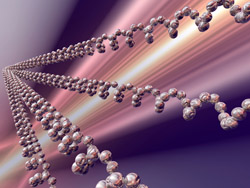Unravelling nuclear architecture during DNA repair
The maintenance of genomic integrity is a vital process for biological inheritance. The fidelity of DNA replication is ensured through proof-reading and repair mechanisms. There is a strong interplay among these different mechanisms which often employ post-translational modifications such as ubiquitination and sumoylation – the attachment of small proteins (ubiquitin or SUMO) to cellular proteins. During replication, the double-stranded DNA helix is unwound forming a structure known as replication fork. DNA polymerase – the enzyme responsible for transcribing the leading DNA strand – consists of many different subunits. The aim of the EU-funded ‘Ubiquitination and sumoylation in modulating subnuclear localization of DNA repair’ (SLX5-8 IN DNA REPAIR) was to understand what affects subnuclear localisation and DNA. Project partners used Saccharomyces cerevisiae (budding yeast) as a model organism to study the mechanisms that affect DNA replication fork stability. By mutating the different subunits of polymerase delta and inducing DNA damage, they identified Pol32 – the third subunit of polymerase delta – as a key player in stalled or collapsed replication forks. Pol32 destabilised polymerases alpha and epsilon, which are also involved in DNA repair and replication. Additionally, researchers revealed that the catalytic subunit of DNA polymerase delta also triggered fork collapse upon induction of DNA damage and that the interaction among the different polymerase subunits was catalytic for its function. Overall, the SLX5-8 IN DNA REPAIR project shed light into the mechanisms that determine nuclear architecture of cells and DNA repair. The study findings are expected to have significant implications in the development of drug and therapeutic interventions for diseases, like cancer, where genomic integrity has been compromised.







